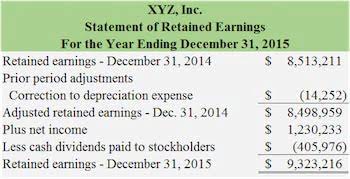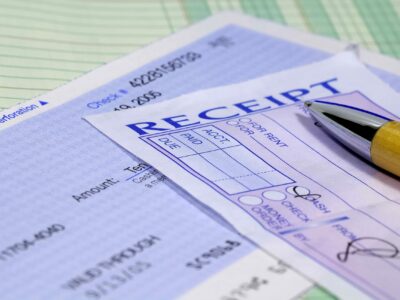
Both of these indicators are applied to measure the company’s liquidity, but they use different formulas. Putting the above together, the total current assets and total current liabilities each add up to $125m, so the current ratio is 1.0x as expected. However, because the current ratio at any one time is just a snapshot, it is usually not a complete representation of a company’s short-term liquidity or longer-term solvency. If a company’s financials don’t provide a breakdown of its quick assets, you can still calculate the quick ratio.

How to calculate the current ratio
For example, a current ratio of 4 means the company could technically pay off its current liabilities four times over. Generally speaking, having a ratio between 1 and 3 is ideal, but certain industries or business models may operate perfectly fine with lower ratios. Unlike the current ratio – which weighs all current assets against current liabilities – the quick ratio focuses exclusively on quick assets. These assets can be converted into cash quickly, usually within 3 months. Since this ratio is calculated by dividing current assets by current liabilities, a ratio above 1.5 implies that the company can cover current liabilities within a year.
How confident are you in your long term financial plan?
Conversely, a company that may appear to be struggling now could be making good progress toward a healthier current ratio. Even from the point of view of creditors, a high current ratio is not necessarily a safeguard against non-payment of debts. By contrast, in the case of Company Y, 75% of the current assets are made up of these two liquid resources. The current ratio is one of the oldest ratios used in liquidity analysis. Current liabilities include accounts payable, wages, accrued expenses, accrued interest and short-term debt. As an investor, you should note that a current ratio may be „good” in one field and only „fair” (or poor) in another, and vice versa.
Current assets

For instance, the liquidity positions of companies X and Y are shown below. Shaun Conrad is a Certified Public Accountant and CPA exam expert with a passion for teaching. After almost a decade of experience in public accounting, he created MyAccountingCourse.com to help people learn accounting & finance, pass the CPA exam, and start their career. This account is used to keep track of any money customers owe for products or services already delivered and invoiced for. If you are interested in corporate finance, you may also try our other useful calculators.
The five major types of current assets are:
- It’s therefore important to consider other financial ratios in your analysis.
- The current ratio measures a company’s ability to pay current, or short-term, liabilities (debt and payables) with its current, or short-term, assets (cash, inventory, and receivables).
- Finance Strategists has an advertising relationship with some of the companies included on this website.
- You will also learn how to add the formula to your spreadsheet to automatically perform current ratio calculations.
- If a company’s accounts receivables have significant value, this could give the organization a higher current ratio, which could in turn prove misleading.
Both current assets and current liabilities are listed on a company’s balance sheet. Let’s look at some examples of companies with high and low current ratios. You can find these numbers on a company’s balance sheet under total current assets and total current liabilities.
“Expert verified” means that our Financial Review Board thoroughly evaluated the article for accuracy and clarity. The Review Board comprises a panel of financial experts whose objective is to ensure that our content is always objective and balanced. Upgrading to a paid membership gives you access to our extensive collection of plug-and-play Templates designed to power your performance—as well as CFI’s full course catalog and accredited Certification Programs.
What Is the Current Ratio? Formula and Definition
The quick ratio, often referred to as the acid-test ratio, includes only assets that can be converted to cash within 90 days or less. However, when evaluating a company’s liquidity, the current ratio alone doesn’t determine whether it’s a good investment or not. It’s therefore important to consider other financial ratios in your analysis. Therefore, the current ratio is like a financial health thermometer for businesses. It helps investors, creditors, and management assess whether a company can comfortably navigate its short-term financial waters or if it’s sailing into rough financial seas.

- In some cases, companies may attempt to improve their Current Ratio by delaying payments or accelerating the collection of accounts receivable.
- There are a few cases in which a company can have a balance sheet current ratio at or around 1 and still be quite healthy.
- Current ratio is equal to total current assets divided by total current liabilities.
- More importantly, it’s critical to understand what areas of a company’s financials the ratios are excluding or including to understand what the ratio is telling you.
- If the ratio is above 3, the company may be mismanaging or underutilizing assets.
- This is because it could mean that the company maintains an excessive cash balance or has over-invested in receivables and inventories.
You can find them on your company’s balance sheet, alongside all of your other liabilities. The interpretation of the value of the current ratio (working capital ratio) is quite simple. As it is significantly lower than the desirable level of 1.0 (see the paragraph https://www.bookstime.com/ What is a good current ratio?), it is unlikely that Mama’s Burger will get the loan. Note the growing A/R balance and inventory balance require further diligence, as the A/R growth could be from the inability to collect cash payments from credit sales.

It’s ideal to use several metrics, such as the quick and current ratios, profit margins, and historical trends, to get a clear picture of a company’s status. A high ratio can indicate that the company is not how to calculate current ratio effectively utilizing its assets. For example, companies could invest that money or use it for research and development, promoting longer-term growth, rather than holding a large amount of liquid assets.
